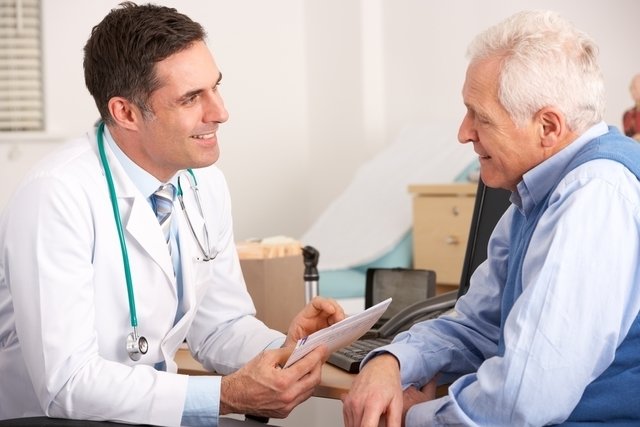The main symptoms of fatty liver are pain in the abdomen, bloating, excessive tiredness, loss of appetite, lighter stools and yellowish skin and eyes, in some cases.
However, the accumulation of fat in the liver, in most cases, does not cause signs or symptoms and when they do appear, they are not very specific, so the diagnosis is made during routine examinations.
Furthermore, fatty liver is generally not a serious condition, but when it is not properly treated, it can lead to loss of liver cell function and cirrhosis, which may require a liver transplant.

Main symptoms
The main symptoms of fatty liver are:
- Loss of appetite;
- Excessive tiredness;
- Abdominal pain, especially in the upper right region;
- Constant headache;
- Belly swelling;
- Itchy skin;
- Yellow skin and eyes;
- Whitish stools.
In the initial stages of fatty liver, no signs or symptoms are normally noticed, however, as the disease progresses and the liver is affected, some symptoms may appear. Understand better what it is, the symptoms, causes and treatment of fatty liver.
Online symptom test
If you think you may have fatty liver, please select your symptoms to find out your risk:
The symptom test is only a guidance tool and does not serve as a diagnosis or replace a consultation with a hepatologist.
Degrees of fat in the liver
Fat in the liver can be classified into a few degrees according to the amount of fat accumulated in the liver:
- Grade 1: when less than 33% of liver cells are affected;
- Grade 2: between 33 and 66% of liver cells are affected;
- Grade 3: more than 66% of liver cells are affected.
However, the accumulation of fat in the liver is generally silent and may not cause symptoms or may only cause fatigue or mild pain in the abdomen. Other symptoms, such as yellowed skin and eyes, are generally not related to the degree of fat accumulated in the liver, but to the presence of inflammation and fibrosis, which can also occur in some people who have this accumulation of fat.
How the diagnosis is made
The diagnosis of fat in the liver can be made by a hepatologist, gastroenterologist or general practitioner, through abdominal ultrasound, however, tests such as computed tomography, magnetic resonance imaging or even liver biopsy can also show the accumulation of fat.
Furthermore, other tests such as measurement of liver enzymes, such as TGO, TGP and bilirubin, may be useful to assess liver function. However, only biopsy or tests such as magnetic resonance elastography or ultrasound, for example, are capable of showing whether there is significant fibrosis and inflammation. Learn about the main tests used to evaluate the liver.
Taking care of your health has never been easier!
Possible causes of fatty liver
The mechanism that leads to the accumulation of fat in the liver is not yet well established, despite being extensively studied. However, it is known that some conditions favor the accumulation of fat in this organ, progressively leading to the loss of liver function.
People who have bad eating habits, who do not practice physical activity, who frequently and excessively drink alcohol, who have high cholesterol or are diabetic are more likely to have fatty liver. Learn more about the causes of fatty liver.
How to deal with
There is a cure for fatty liver, especially when it is still in its early stages, and its treatment is mainly done with changes in diet, regular physical activity, weight loss and control of diseases such as diabetes, hypertension and high cholesterol.
Furthermore, it is important to stop smoking and drinking alcohol, and reduce the consumption of foods rich in fat and simple carbohydrates, such as white bread, pizza, red meat, sausage, sausage, butter and frozen foods. Therefore, the diet should be rich in whole foods, such as wheat flour, rice and whole grain pasta, fruits, vegetables, fish, white meat, milk and skimmed dairy products. Check out what your diet for fatty liver should be like.
Watch the video to find out which foods are recommended in the fatty liver diet.
Bibliography
- SHEKA, Adam C. et al. Nonalcoholic Steatohepatitis . JAMA. Vol.323, n.12. 1175-1183, 2020
- ABDELMALEK, Manal F. Nonalcoholic fatty liver disease: another leap forward. Nature reviews gastroenterology & hepatology. Vol.18. 85–86, 2021
- COBBINA, Enoch; AKHLAGHI, Fatemeh. Non-Alcoholic Fatty Liver Disease (NAFLD) – Pathogenesis, Classification, and Effect on Drug Metabolizing Enzymes and Transporters. Drug Metab Rev. Vol 49. 2 ed; 197-211, 2017
- MANNE, Vignan; HANDA, Priya; KOWDLEY, Kris V. Pathophysiology of Nonalcoholic Fatty Liver Disease/Nonalcoholic Steatohepatitis. Clinics in Liver Disease. Vol.22, n.1. 23-37, 2018
- BRAZILIAN SOCIETY OF HEPATOLOGY. Hepatic steatosis. Available at: <https://sbhepatologia.org.br/imprensa/esteatose-hepatica/>. Accessed on March 30, 2020
- PARISE, Edison Roberto . Hepatic steatosis (review). Atheros. vol.13, n.2. 52-55, 2002
- BRAZILIAN MINISTRY OF HEALTH. Hepatic steatosis (fatty liver): causes, symptoms, diagnosis, treatment and prevention. Available at: <https://saude.gov.br/saude-de-az/esteatose-hepatica>. Accessed on March 30, 2020
- DONGIOVANNI, Paola; VALENTI, Luca. A Nutrigenomic Approach to Non-Alcoholic Fatty Liver Disease. International Journal of Molecular Science. Vol 18. 2017

Sign up for our newsletter and stay up to date with exclusive news
that can transform your routine!
Warning: Undefined array key "title" in /home/storelat/public_html/wp-content/plugins/link-whisper-premium/templates/frontend/related-posts.php on line 12
Warning: Undefined array key "title_tag" in /home/storelat/public_html/wp-content/plugins/link-whisper-premium/templates/frontend/related-posts.php on line 13




